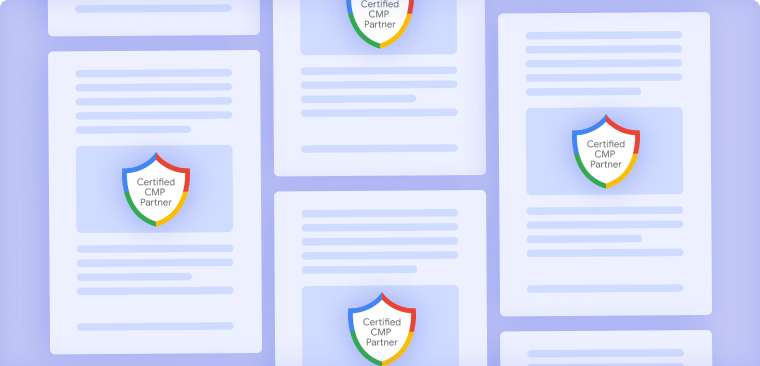What to Look for in a CMP: A Buyer’s Checklist for 2025
November 14, 2025
•
2 min read
Table of contents
back
to the top
What to Look for in a CMP: A Buyer’s Checklist for 2025
Choosing a Consent Management Platform (CMP) isn’t just about checking a compliance box, it’s about finding a scalable, reliable, and transparent solution that grows with your business in 2025 and beyond.
With privacy laws evolving and regulators cracking down on shady consent practices, you need more than just cookie banners. You need a GDPR-compliant, UX-friendly, feature-rich CMP that’s ready for what’s next.
This guide gives you a CMP buyer’s checklist designed to help privacy managers, marketers, and legal teams. Whether you're drafting a CMP RFP or preparing to migrate from an underperforming tool, this post is for you.
Why Choosing the Right CMP Matters
The wrong CMP can lead to:
- Poor consent rates
- Non-compliant banners
- Lack of audit logs
- Limited customization
- Frustrated users and legal teams
The right CMP will:
- Ensure GDPR compliance
- Build user trust
- Increase opt-in rates
- Integrate seamlessly with your tech stack
In 2025, with the bar for privacy raised across the EU, UK, and beyond, these capabilities aren’t optional, they’re essential.
CMP Buyer’s Checklist: 10 Key Features to Evaluate
Use this checklist as a starting point for comparing CMPs during procurement or RFP evaluations.
1. Full GDPR Compliance
- Does it support granular consent and explicit opt-in?
- Is consent freely given, informed, and revocable?
2. Geo-Targeting Capabilities
- Can it show GDPR-specific banners only to users in the EU/UK?
- Does it support multi-regional customization?
3. First-Party Cookie Consent Mode
- Supports Google Consent Mode v2 and future GCM updates
- Works with Google Tag Manager and Analytics
4. Customizable UX & Design
- Fully brandable banners (color, layout, CTA labels)
- Equal visibility for “Accept” and “Reject”
5. No Dark Patterns
- Transparent UI with no pre-ticked boxes, no hidden settings, and clear language
6. Language & Accessibility Support
- Automatically detects browser language
- WCAG 2.1 AA compliant for accessibility
7. Detailed Consent Logs & Proof
- Stores timestamped user consents
- Easy export for GDPR audits
8. Fast Load & Performance Impact
- Lightweight script that doesn’t delay page speed
- Works asynchronously to avoid layout shifts
9. Reliable Support & Documentation
- Offers onboarding help, multi-channel support, and regular updates
10. Fair Pricing & Scalability
- Transparent pricing model with no hidden fees
- Scales with websites, regions, and traffic volumes
Final Takeaway
As privacy standards tighten in 2025, your choice of CMP is more strategic than ever. A basic banner is no longer enough, businesses need a partner that offers compliance, flexibility, and control.
The best CMP in 2025 is one that doesn’t just protect your business from fines — it protects your brand’s relationship with users.
Sources
Explore further

Optimizing Consent Rates Without Violating GDPR
Want to boost consent rates without breaking GDPR rules? Many teams cut corners, but there’s a better way — increase opt-ins legally and effectively.
May 12, 2025
3 min

The Role of Data Protection Officers (DPOs) in GDPR Compliance
In today’s digital landscape, protecting personal data has become a vital concern for organisations.
September 16, 2024
4 min

Are Cookie Walls Legal? What EU Regulators Have Said So Far
A clear guide to cookie walls: what GDPR and EU regulators say, recent rulings, and CMP best practices to avoid forced consent.
November 21, 2025
2 min


